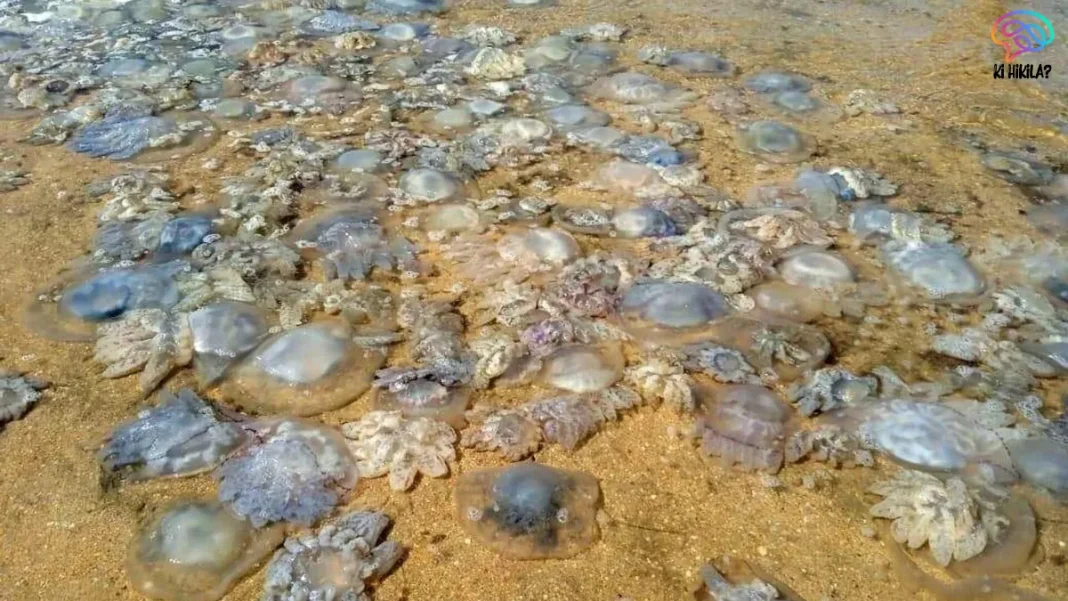Jellyfish Swarms Nuclear Power Plants have emerged as a growing global concern, with recent incidents highlighting the vulnerability of critical energy infrastructure to marine life. In one striking example, France’s Gravelines Nuclear Power Station—the largest in Western Europe—was forced to temporarily shut down multiple reactors after a sudden jellyfish invasion clogged its cooling system. This is not an isolated event but part of an increasing trend where jellyfish blooms disrupt nuclear operations across the world.
As energy systems become more interlinked with fragile ecosystems, understanding these incidents is essential for ensuring both energy security and environmental management.
How Jellyfish Affect Nuclear Power Plants
Nuclear power plants depend heavily on seawater for cooling. Large intake pipes draw in millions of liters of seawater per hour to maintain reactor temperatures and prevent overheating. These pipes are equipped with grated screens to block debris and aquatic life.
However, during massive jellyfish blooms, millions of gelatinous creatures are sucked into the intake system. They rapidly clog the screens, obstructing water flow and risking overheating of turbines, condensers, and boilers. When this happens, operators are left with no choice but to shut down reactors to prevent catastrophic damage.

Clearing jellyfish blockages is neither quick nor easy. Workers must physically remove tons of jellyfish, a task that can take anywhere from several hours to two days. In the case of Gravelines, the shutdown caused significant operational delays and highlighted the scale of risk posed by Jellyfish Swarms Nuclear Power Plants disruptions.
Reasons for Rising Jellyfish Incidents
The frequency of jellyfish-related shutdowns has been rising worldwide, and scientists point to a combination of human-driven environmental factors:
- Climate Change and Warming Oceans
Rising ocean temperatures accelerate jellyfish reproduction and increase plankton growth—the primary food source for jellyfish. Warmer waters extend jellyfish breeding seasons, creating ideal conditions for population explosions. - Overfishing of Natural Predators
Fish species such as tuna, cod, and mackerel, along with sea turtles, naturally keep jellyfish populations in check. Overfishing has drastically reduced these predators, giving jellyfish an unchecked ecological advantage. - Coastal Pollution and Habitat Alteration
Plastic pollution and nutrient-rich runoff create “dead zones” with low oxygen levels where jellyfish thrive better than most marine species. Coastal construction and artificial structures also provide jellyfish with convenient breeding and nursery grounds.
These combined factors have allowed jellyfish blooms to expand in size, intensity, and frequency, raising new alarms for industries relying on stable marine ecosystems.
Global Implications of Jellyfish Blooms
The consequences of Jellyfish Swarms Nuclear Power Plants incidents extend beyond temporary reactor shutdowns:
- Energy Supply Disruptions: Sudden outages reduce electricity availability, sometimes during peak demand periods. For nations heavily reliant on nuclear energy, this creates vulnerability in grid stability.
- Economic Losses: Shutdowns and emergency repairs incur heavy costs. In addition, industries dependent on uninterrupted electricity face secondary losses.
- Ecological Concerns: Jellyfish swarms themselves are a symptom of deeper marine imbalances linked to climate change, pollution, and overfishing. Their growing dominance signals declining ocean health.
- Public Safety: Nuclear operators must carefully manage shutdowns to avoid overheating risks, making jellyfish-induced disruptions a potential safety challenge.
Countries like Japan, Israel, Scotland, and the Philippines have all reported jellyfish-induced nuclear shutdowns in the last decade, underlining that this is not a regional problem but a global one.
Mitigation Strategies
Addressing Jellyfish Swarms Nuclear Power Plants challenges requires a multi-pronged approach:
- Technological Solutions
- Upgrading intake screening systems with finer, more resilient mesh designs.
- Installing high-capacity pumping mechanisms to divert jellyfish away from intakes.
- Using sonar and radar systems to detect approaching jellyfish blooms.
- Ecological Monitoring
- Establishing jellyfish population monitoring networks.
- Using satellite imagery and bloom forecasting to provide early warnings.
- Integrating marine biology data into energy security planning.
- Environmental Policy Changes
- Reducing overfishing to restore natural predator populations.
- Strengthening pollution control and plastic waste management.
- Committing to climate action to curb ocean warming.
By combining technology with ecological management, experts believe the risks of jellyfish disruptions can be significantly reduced.
Conclusion

The rise of Jellyfish Swarms Nuclear Power Plants disruptions highlights the delicate balance between human industry and natural ecosystems. Nuclear plants, designed to deliver clean and reliable energy, are increasingly vulnerable to biological forces intensified by climate change and environmental degradation.
If left unchecked, jellyfish blooms will continue to pose risks not only to nuclear power but also to fisheries, coastal tourism, and marine biodiversity. Governments, industries, and environmentalists must work together to implement adaptive strategies, combining engineering innovation with ecological stewardship.
Ultimately, the solution lies not in battling jellyfish alone but in addressing the broader environmental crises—warming oceans, collapsing predator populations, and pollution—that have enabled them to flourish.



